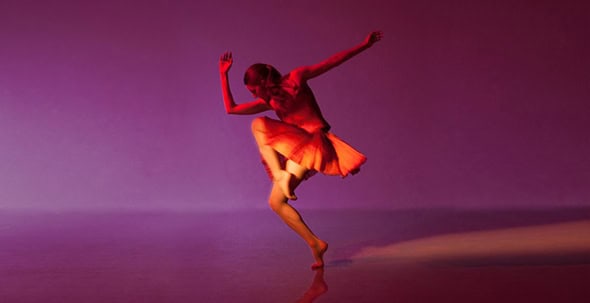Richard Alston At Home at The Place
Posted: December 10th, 2019 | Author: Nicholas Minns | Filed under: Performance | Tags: Akira Miyoshi, Bob Lockyer, Elly Braund, Franz Schubert, Hannah Kidd, Heiner Goebbels, Jo Kondo, Martin Lawrance, Merce Cunningham, Richard Alston, Robert Cohan, Robin Howard, Siobhan Davies, Terry Riley | Comments Off on Richard Alston At Home at The PlaceRichard Alston Dance Company, Alston At Home at The Place, November 28

Richard Alston was one of the first dancers, along with Siobhan Davies, whom the dance enthusiast and philanthropist Robin Howard invited in 1968 to the building that would become The Place. Howard invited Robert Cohan to be the first artistic director of the school and to ‘form a dance company based on love’. Howard drew up a list of objectives for The Place, including ‘to use the universal language of dance to break down social, political, linguistic and other barriers’ and that ‘its standards should never, for any reason, be allowed to decline.’ It was left to Cohan to embody these objectives, both at the school and in London Contemporary Dance Company, and since the company’s demise in 1994 it has been the aim of Richard Alston’s resident company to maintain them. While keeping the school running, The Place has now seen the formation and dissolution of two resident companies, which is hardly an incentive to students in a performing art. Whatever the reason for closing Alston’s company, the cause is clearly not the company’s current form.
Alston At Home is a fifty-year perspective, from Alston’s very first choreography in 1969 — the solo and duet from Nowhere Slowly — to his latest, Bari, made for graduating students from London Contemporary Dance School. In between there is another early work, Blue Schubert Fragments (1972), something from the intermediate period, Red Run (1998), and two relatively recent works, Isthmus, made for Bob Lockyer’s birthday celebration in 2012, and Martin Lawrance’s Detour (2018). In addition, to mark the centenary of Alston’s mentor, Merce Cunningham, the evening includes two of the solos from the Cunningham Centennial Solos program presented earlier this year at the Barbican. The program is not only a retrospective but a clear mark of Alston’s appreciation to everything The Place has meant to him over the past 25 years. A visual artist of similar renown would be able to hold a retrospective in a single gallery over a period of time; as a choreographer, Alston’s retrospective extends over three programs in various venues, the last of which will be Sadler’s Wells on March 7 and 8 next year.
What this program shows are Alston’s choreographic building blocks and their spatial development over time. The solo and duet from Nowhere Slowly has a simple structure with classically derived shapes and torsions and a clean sense of line. Set to Terry Riley’s music, there is a Cunningham influence in that what happens is what happens, no more no less. Two years later Alston approaches the adagio of Schubert’s quartet Death and the Maiden with more complexity; Blue Schubert Fragments is choreographed as if each of the six dancers is a solo instrument. Such emotional music can overpower a choreographic response to it, but here Alston extracts a spatial harmony from the integrated texture of the score.
In Bari, the folk-inspired music of South Italian pizzica has a buoyancy and energy — the traditional dance was conceived as an antidote to poisonous spider bites in the field — that the London Contemporary Dance School students relish. So does Alston, who smiles his way through the work with an infectious confidence.
Alston contributed two works to Lockyer’s birthday bash in 2012, one of which was Isthmus, a quartet for two women and two men to Jo Kondo’s intimate, intricate score. The choreographic shapes are evocative of the earlier works but Alston’s adhesion to the musical rhythms creates a work with the rapid dynamics and sharp spatial patterns that define it.
Martin Lawrance’s Detour moves up the program order of the evening due to a last-minute replacement of an injured Elly Braund by Hannah Kidd. As a former dancer in the company and the current associate choreographer, Lawrance is clearly an important influence on Alston, and vice versa. Detour, created to Akira Miyoshi’s percussive Ripple for solo marimba, uses elements of Alston’s vocabulary but submits it to an aggressive, virile energy that wrenches it apart. Calm returns after the intermission, with the Cunningham solos that revel in space and chance; Siobhan Davies is perfectly attuned to it in her mysterious dialogue with the air around her while Kidd’s more grounded contribution joins the physical to the aleatory.
Red Run jolts us back to the energy levels of Lawrance but in responding to Heiner Goebbels’ Nine Songs for Eleven Instruments Alston employs a sense of luxuriant and fast-paced playfulness that challenges the musicality and technical proficiency of the six dancers. It finishes, ironically for this occasion, with a suggestion of death.